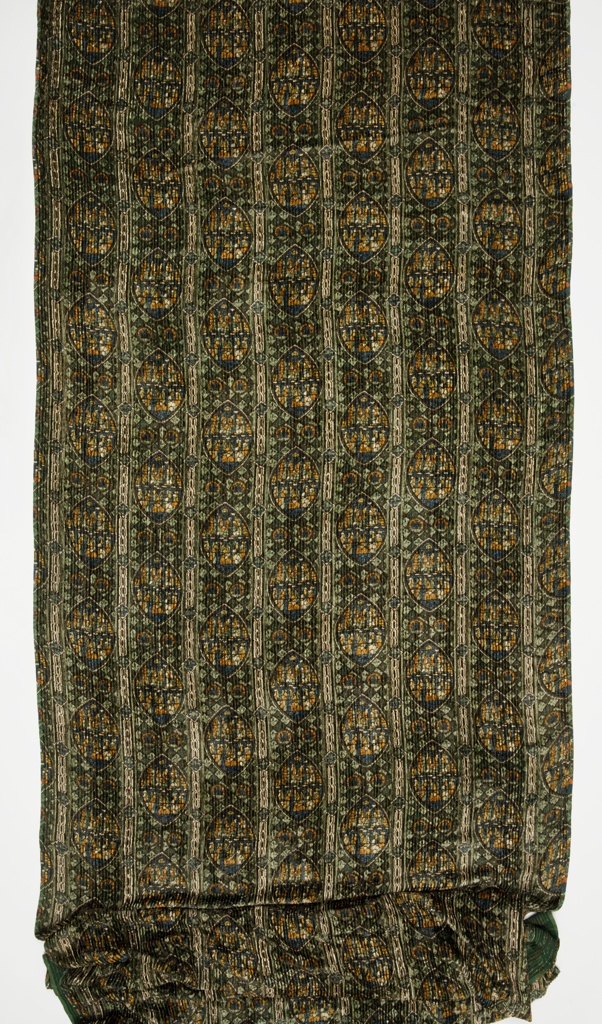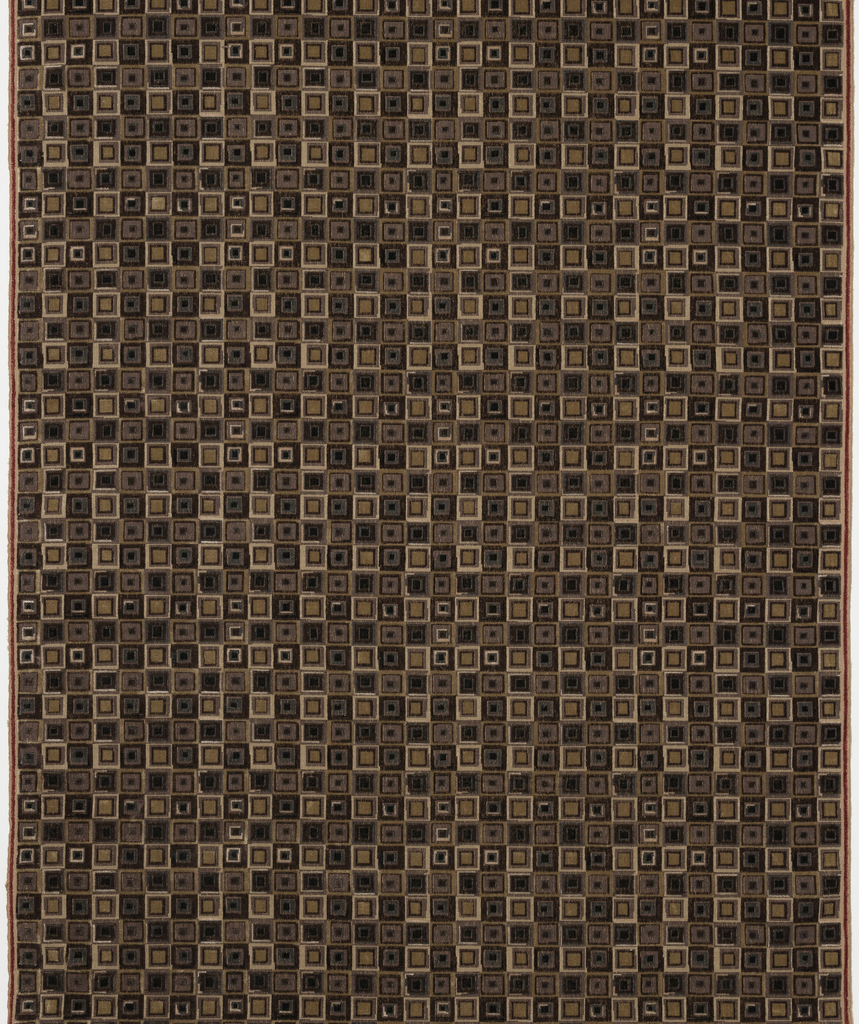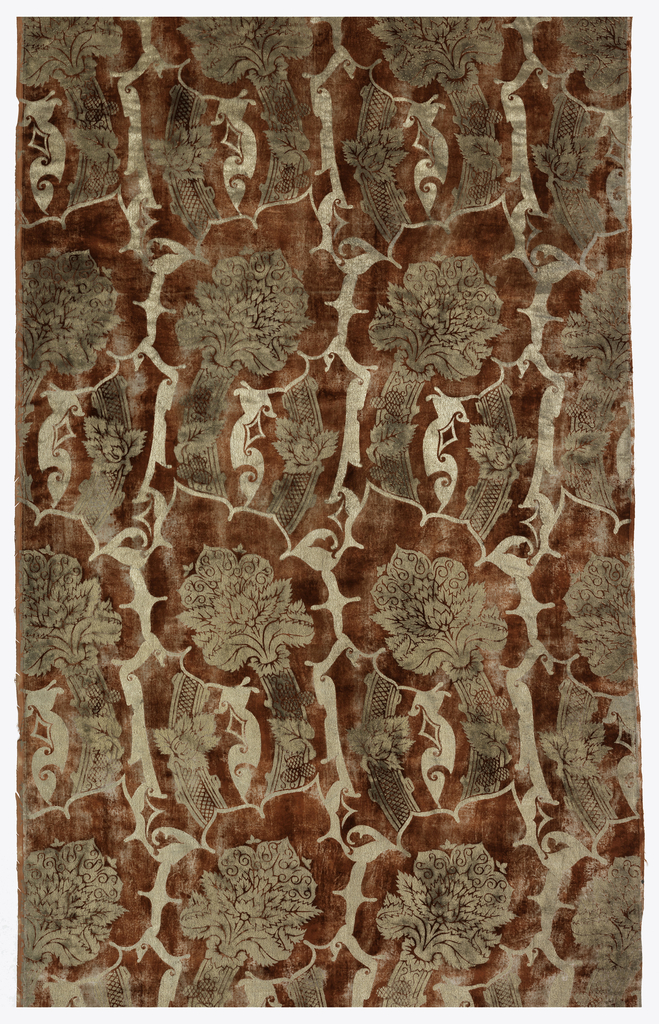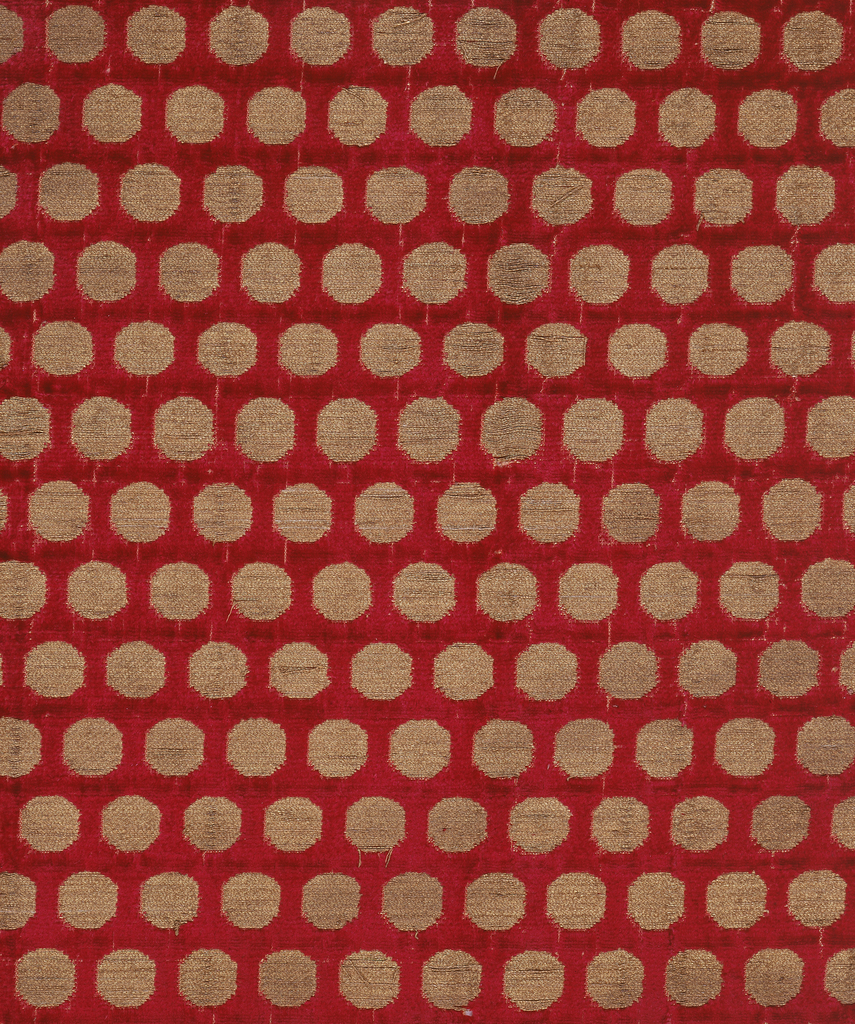In 1923, E. Irving Hanson (American, 1878–1955), vice president of the textile firm H.R. Mallinson & Company, made a visit to France. With a long-standing interest in art and design, his trip inspired a group of six textiles based on famous places in that country, using iconic churches and gardens as its theme. In Paris,...
In composition, Kaleidoscope closely resembles Larsen’s famous design of concentric squares, Magnum. But whereas that design was machine-embroidered around mirror-like squares of Mylar, Kaleidoscope is a durable, hard-wearing upholstery in a technique called epinglé velvet – so named for the wires which are inserted into the shed during the weaving and over which the pile...
This velvet exemplifies the prodigious skill of Italian velvet weavers in the latter half of the 15th century. The red silk pile is embellished with sparkling allucciolato, or metallic weft loops. The voided areas have no pile, but shine with supplementary wefts of silk wrapped in silver-colored metal. Italian velvet weavers developed a special technique...
Mariano Fortuny and his family collected textiles and costumes from around the world, compiling a rich resource that served as inspiration for his own designs. “A fabric design,” he once noted, “concretely captures a moment through the skill of the artist, who responds unconsciously to the place and time in which he lives.” This pattern...
This sumptuous red velvet with gold disks embodies what we can learn from textiles by looking, comparing, deconstructing, reconstructing, and then interpreting our observations. Milton Sonday, my predecessor in the Textiles department at the Cooper-Hewitt, is a master of this methodology and has spent years employing it and teaching it to researchers and curators around...




